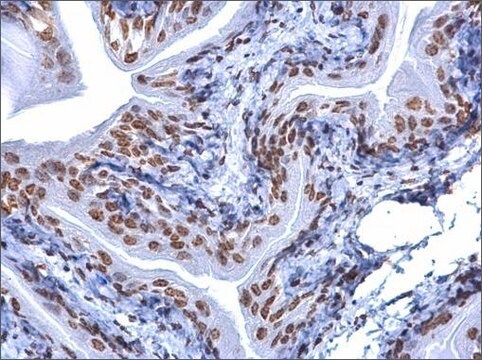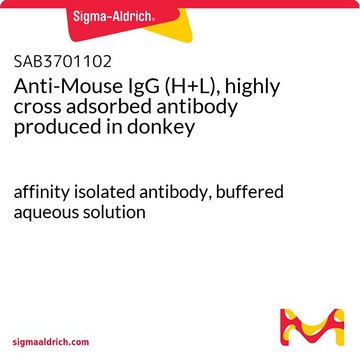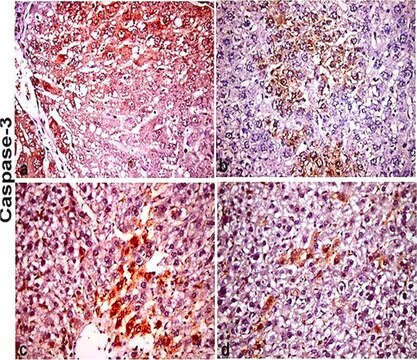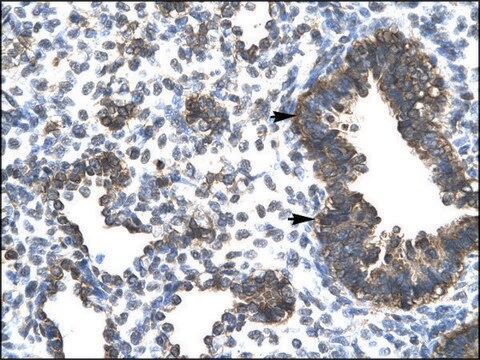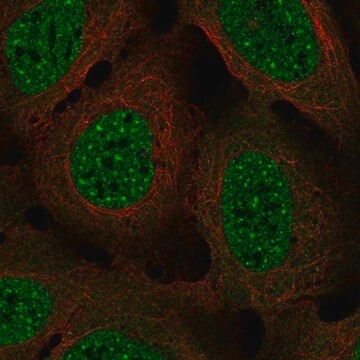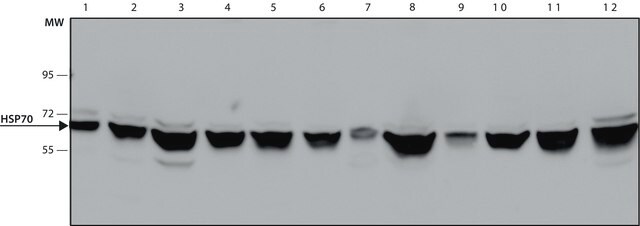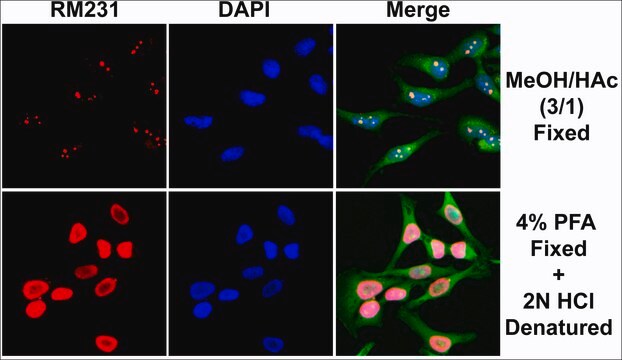SAB3701079
Anti-Mouse IgG (H+L) antibody produced in rabbit
affinity isolated antibody, buffered aqueous solution
Autenticatiper visualizzare i prezzi riservati alla tua organizzazione & contrattuali
About This Item
Codice UNSPSC:
12352203
NACRES:
NA.46
Prodotti consigliati
Origine biologica
rabbit
Livello qualitativo
Coniugato
unconjugated
Forma dell’anticorpo
affinity isolated antibody
Tipo di anticorpo
secondary antibodies
Clone
polyclonal
Stato
buffered aqueous solution
Reattività contro le specie
mouse
Concentrazione
1.95 mg/mL
tecniche
immunohistochemistry: suitable
indirect ELISA: suitable
western blot: suitable
Condizioni di spedizione
wet ice
Temperatura di conservazione
2-8°C
modifica post-traduzionali bersaglio
unmodified
Descrizione generale
Immunoglobulin G (IgG) belongs to the immunoglobulin family and is a widely expressed serum antibody. It consists of a γ heavy chain in the constant (C) region. The monomeric 150kDa structure of IgG constitutes two identical heavy chains and two identical light chains with molecular weight of 50kDa and 25kDa, respectively. The primary structure of this antibody also contains disulfide bonds involved in linking the two heavy chains, linking the heavy and light chains and resides inside the chains. IgG is further subdivided into four classes namely, IgG1, IgG2, IgG3, and IgG4 with different heavy chains, named γ1, γ2, γ3, and γ4, respectively. Limited digestion using papain cleaves the antibody into three fragments, two of which are identical (called Fab fragments) and contain the antigen-binding activity. The third fragment (called Fc fragment) does not possess antigen-binding activity, but binds to cells and effector molecules. Maternal IgG is the only antibody transported across the placenta to the fetus. It passively immunizes the infants.
Specificità
This product was prepared from monospecific antiserum by immunoaffinity chromatography using Mouse IgG coupled to agarose. Assay by immunoelectrophoresis resulted in a single precipitin arc against Anti-Rabbit Serum, Mouse IgG and Mouse Serum.
Immunogeno
Mouse IgG whole molecule
Proprietà fisiche
Antibody format: IgG
Stato fisico
Supplied in 0.02 M Potassium Phosphate, 0.15 M Sodium Chloride, pH 7.2
Esclusione di responsabilità
Unless otherwise stated in our catalog or other company documentation accompanying the product(s), our products are intended for research use only and are not to be used for any other purpose, which includes but is not limited to, unauthorized commercial uses, in vitro diagnostic uses, ex vivo or in vivo therapeutic uses or any type of consumption or application to humans or animals.
Non trovi il prodotto giusto?
Prova il nostro Motore di ricerca dei prodotti.
Codice della classe di stoccaggio
10 - Combustible liquids
Punto d’infiammabilità (°F)
Not applicable
Punto d’infiammabilità (°C)
Not applicable
Scegli una delle versioni più recenti:
Possiedi già questo prodotto?
I documenti relativi ai prodotti acquistati recentemente sono disponibili nell’Archivio dei documenti.
Janeway CR
Immunobiology (2001)
Human placental Fc receptors and the transmission of antibodies from mother to fetus.
Simister NE and Story CM
Journal of Reproductive Immunology (1997)
Antibody structure, instability, and formulation.
Wang W
Journal of Pharmaceutical Sciences (2007)
Ranadhir Dey et al.
Journal of immunology (Baltimore, Md. : 1950), 193(7), 3513-3527 (2014-08-27)
Previously, we showed that genetically modified live-attenuated Leishmania donovani parasite cell lines (LdCen(-/-) and Ldp27(-/-)) induce a strong cellular immunity and provide protection against visceral leishmaniasis in mice. In this study, we explored the mechanism of cross-protection against cutaneous lesion-causing
Jiraporn Jirakkakul et al.
FEMS microbiology letters, 362(2), 1-8 (2015-02-12)
Iron is an essential element for life. However, the iron overload can be toxic. Here, we investigated the significant increase of tenellin and iron-tenellin complex production in ferricrocin-deficient mutants of Beauveria bassiana. Our chemical analysis indicated that the ferricrocin-deficient mutants
Il team dei nostri ricercatori vanta grande esperienza in tutte le aree della ricerca quali Life Science, scienza dei materiali, sintesi chimica, cromatografia, discipline analitiche, ecc..
Contatta l'Assistenza Tecnica.